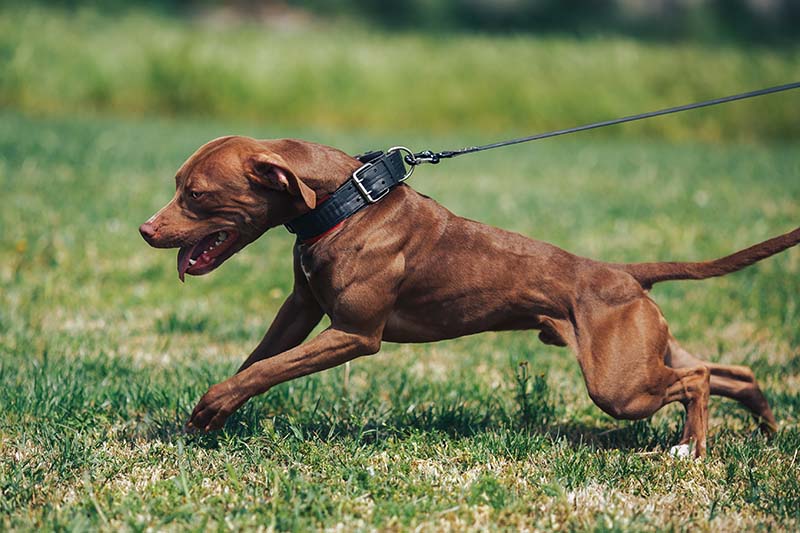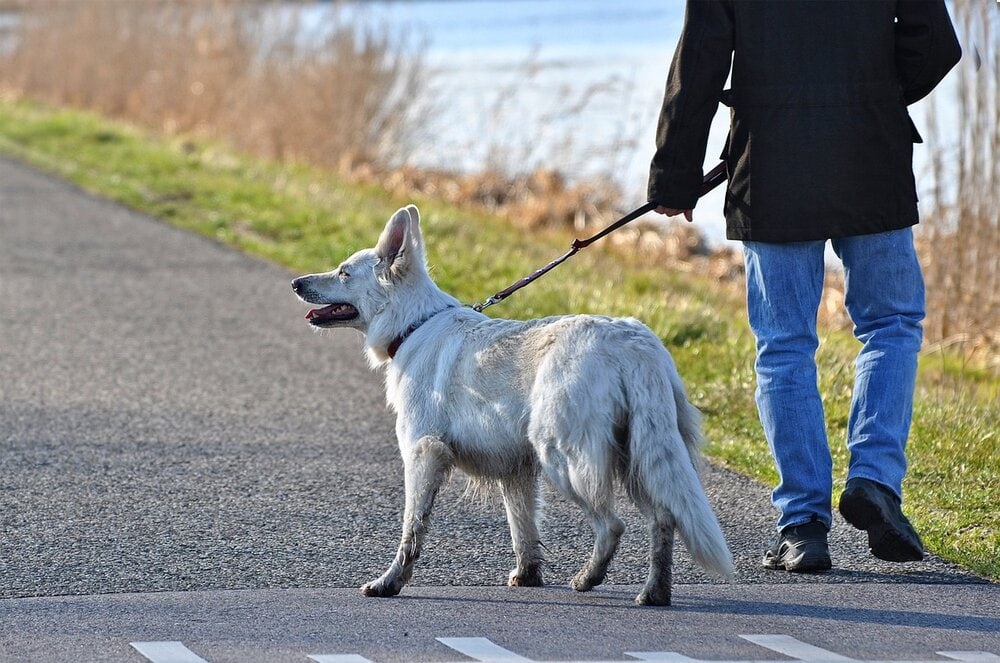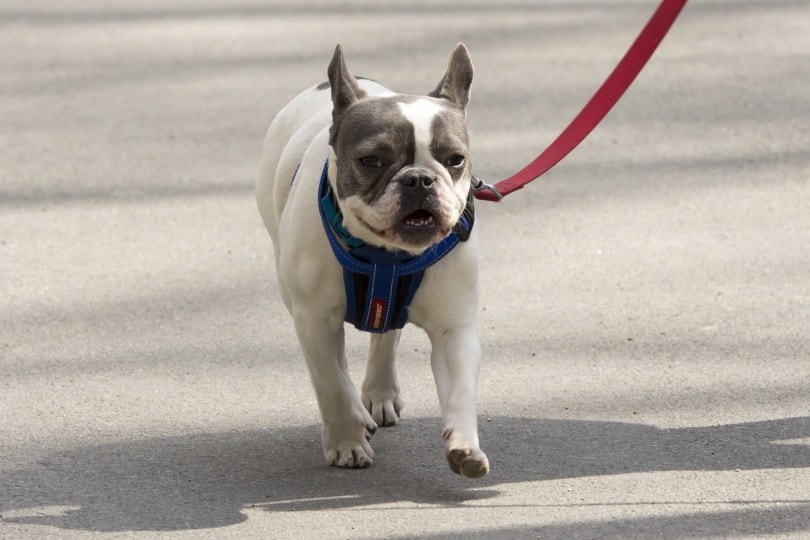
Taking your dog for a walk is an activity that can benefit you both mentally, physically, and emotionally. But it can be frustrating when your dog pulls on the leash constantly. Not only does it make the walk uncomfortable, but it can also put you in harm’s way.
Pulling on the leash puts pressure on the dog’s neck and can hurt its throat, especially if you yank it back in opposition. If you’re dealing with a giant breed, sometimes the force can be enough to send you sprawling to the ground face-first.
Do you feel like your dog is walking you instead? The good news is you can improve your dog’s leash skills and gain back control. Keep reading, and we will tell you how to stop your dog from pulling you down the street.
Why Do Dogs Pull on the Leash?
Knowing why your dog is pulling on the leash is essential. That way, you can avoid encouraging the behavior if it turns out your actions have anything to do with it. Understanding the reason behind it will also let you know which methods to employ since not all work for every dog.

It’s a Natural Behavior
Humans like walking in an orderly manner. As you may have noticed, that is not so with a man’s best friend. Dogs follow where their noses lead. The scents they pick up dictate when to speed up, slow down, or stop.
Your dog is also easily influenced by the environment around them. The sight of some kids playing nearby is enough to pique its interest, making it change direction abruptly and, inevitably, dragging you along.
Additionally, you may have noticed that your dog starts to pull when you clip the leash on the collar. That’s because its instinct is to oppose restraint. As such, you must teach it to walk on a leash since it does not come naturally.
They Learn From You
Do you pull the leash every time you want your dog to move? You are teaching it to use force whenever it wants to get its way. Therefore, it will use its body to knock into you, jump on you, paw at you, and pull on the leash to get what it wants.
Constantly yanking at the leash when you want the dog to do something will accomplish two things. First, it will teach your dog that pulling is okay. Secondly, the dog will always be alert, expecting you to yank it away. That will make it impossible for it to relax during those walks.
The truth is there is no need to rely on physical force¹ to get your dog moving. Sometimes a simple command will suffice. Alternatively, you can use your body language to communicate. The stronger the bond between you, the easier it will be for your dog to cooperate.
It Works
Another reason your dog pulls on the leash is that it works. And you encourage the behavior every time you let it get away with it. Think about it. It gets to go wherever it wants while dictating the pace. Why would it ever stop?
The 6 Tips to Stop Your Dog From Pulling on a Leash
Breaking the habit will be difficult if your dog has pulled on the leash for a long time. However, it is not impossible. You can train your dog to walk calmly using the six methods below, provided you are patient and consistent.
1. Don’t Let Them Pull

If your dog always gets its way by pulling, it may never stop doing it. That’s why you should never let it get away with it.
There are two training methods you can use to reinforce your preferred behavior. The first is stopping every time they start pulling until they let up. The second is making a quick turn and heading in the opposite direction.
It may take time before your dog unlearns what comes naturally. But with patience and consistency, you can train it to follow rather than lead.
2. Reinforce Good Behavior
Training your dog not to pull may be difficult. But you can make things easier for yourself by keeping your dog motivated. You are asking a lot by forcing it to abandon what comes naturally. The least you can do is give it a reason to.
Make a habit of rewarding the dog with treats and food when they do the right thing. If you do it enough times, it will learn to associate the pleasure with not pulling the leash. Eventually, it will find it more profitable to walk beside you.
Be careful not to give your dog too much food if you are worried about their weight. You can give fewer and fewer treats as the dog continues to learn, then gradually replace them with pats and praise.
3. Be Unpredictable

You don’t need to wait for the dog to pull during training. Another effective method is being proactive by being unpredictable in your movements.
Make quick turns, reverse direction, and change your speed while walking. That will teach your dog to follow you rather than pull you along. You can reinforce the behavior with treats whenever the dog obeys your request.
4. Exercise the Dog First
Teaching your dog not to pull when it’s excited is challenging. Exercising before taking a walk can help lower its energy down a notch, thus making it easier to reinforce your preferred behavior.
Playing tug of war, hide and seek, or a good old game of catch can help take the edge off. The dog will be less likely to pull when it’s tired.
5. Switch to a Chest-Led Harness

A no-pull dog harness is more effective¹ at controlling your canine’s movement. It makes it harder for the dog to pull and is safer than a traditional leash. Although you might struggle to put it on the first time, using it is straightforward.
You can use a chest-led harness to teach the dog walking manners. When the dog pulls on the leash, it moves to the side and turns its body towards you, pulling them to your side. It prevents injuries to the throat since it removes pressure from the neck.
However, a no-pull harness will not stop pulling forever. So, it is better to think of it as a training tool. Your dog can learn to stop pulling when it’s on, but it will immediately revert to its old ways when you strap on the loose leash.
6. Don’t Set Your Dog Up for Failure
Make it easier for your dog to succeed during training by doing it in a less distracting environment. Otherwise, it will be hard to train the dog when it’s not paying attention to you.
Pick a non-exciting area where it won’t be distracted by all the noise, sights, and smells. If you have to take them for a walk in the park, choose a day when it’s less busy to avoid distractions.
Also, choose the perfect time of day. Early mornings and late evenings would work best since you are less likely to meet people on the way.
Final Thoughts
A dog walking calmly by your side is every dog owner’s dream. However, the allure of a new environment can get some canines all worked up during walks.
Training your dog to stop what comes naturally is not a walk in the park. But it is possible if you follow the tips outlined above.
Above all, patience and consistency are imperative. Training can be frustrating and time-consuming. But the reward is worth the effort if you stick to the plan.
Featured Image Credit: Brezhneva.od, Shutterstock


